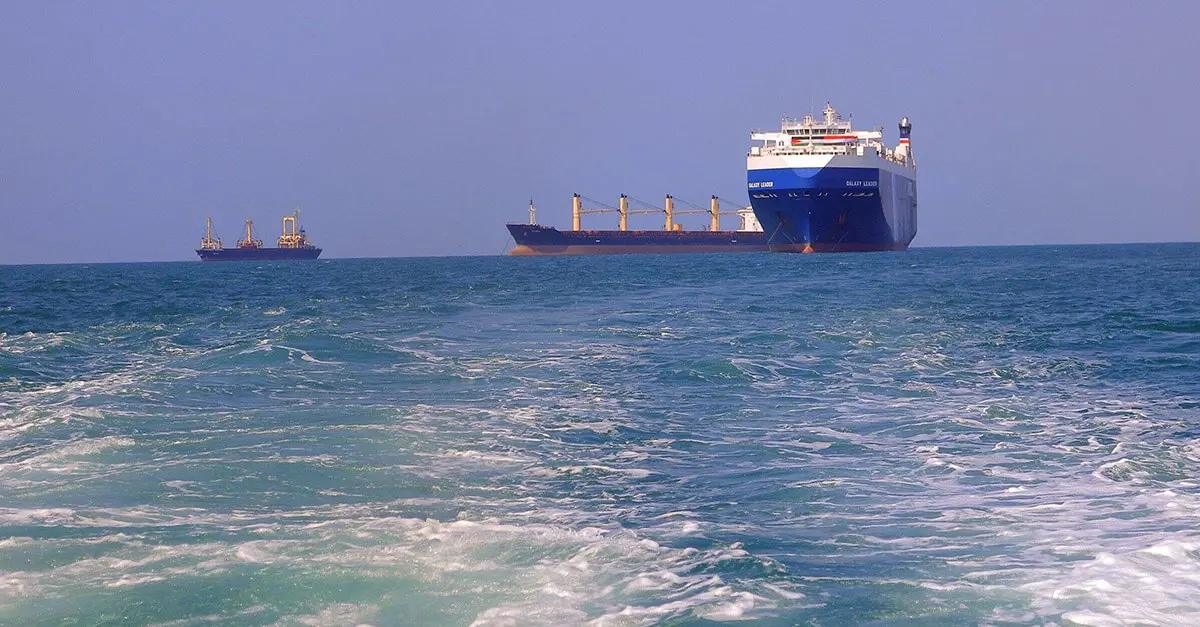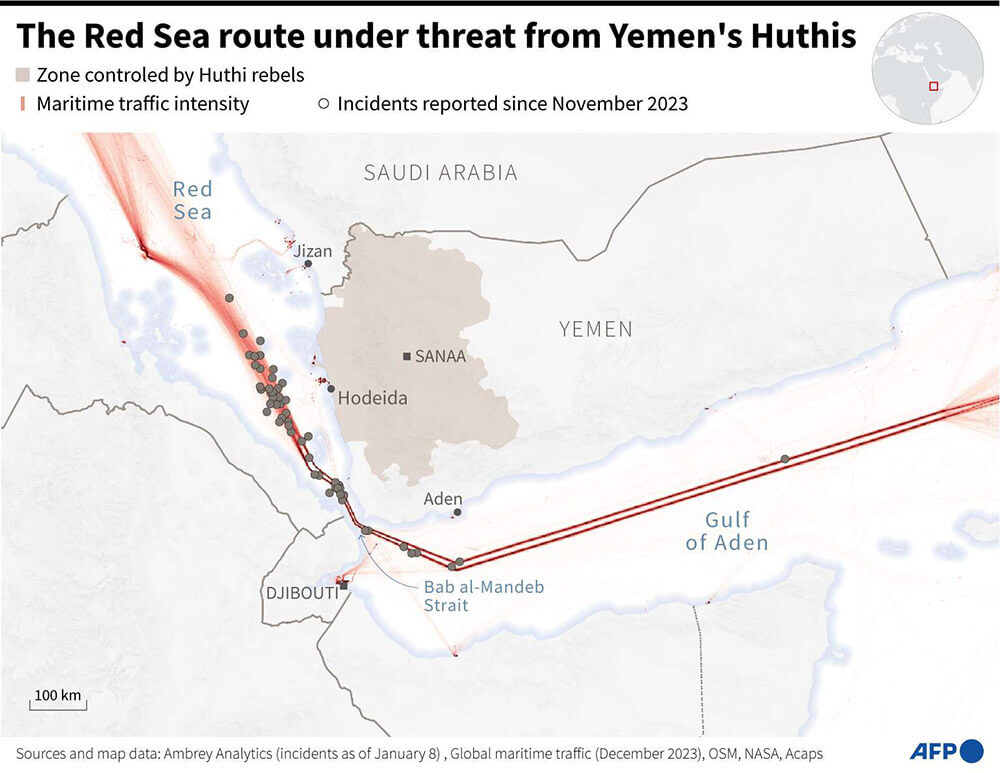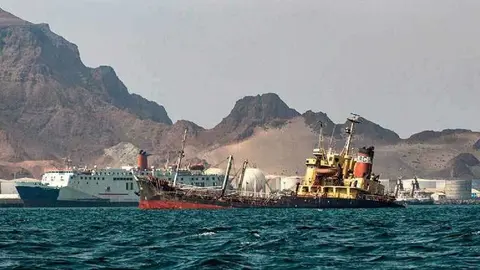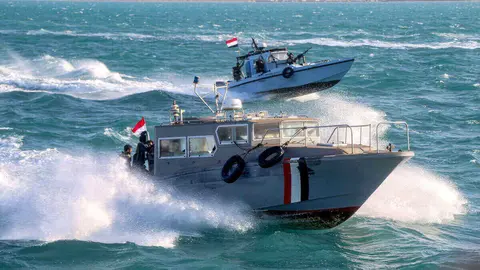More inflation awaits us

Nearly 30 vessels of all sizes have been attacked, mostly with drones, but also with missiles, and there have even been spectacular assaults on several cargo ships from military helicopters, as if it were a James Bond movie.
According to the US Central Command, on 9 January alone, its naval military forces together with those of the UK shot down 21 drones, several anti-ship cruise missiles and one anti-ship ballistic missile, all launched from Yemen (by Houthi militias) into the southern Red Sea.
Blinken wants more countries, especially Arab countries, as well as NATO members to join the coalition that is protecting the integrity of the maritime fleets and their goods and defending them militarily. There is a certain reluctance to participate, as is the case with Spain, which has remained on the sidelines, at least for the time being.
Even merchant ships have been hijacked, as was the case in December with the Galaxy Leader, loaded with vehicles being transported from India to Turkey. This Bahamas-flagged ship, owned by a British company, is still being held hostage, with 25 crew members of various nationalities: Filipinos, Ukrainians, Bulgarians and Mexicans.
For Oxford Economics to have fear, because there is insecurity, on one of the world's major shipping lanes will only bring more complications for world trade and thus negative impacts on the economy.
Why is the Red Sea route so important? It is the route through the Red Sea, which carries thousands of containers not only of raw materials and intermediate goods, but also final goods such as vehicles produced in India, China and other Asian countries.

It is the shortest route through the Bab el-Mandeb Strait to the Suez Canal, the shortest route to the port of Rotterdam in the Netherlands, which serves as a major hub for the whole of Europe. Cargo ships sail 11,000 nautical miles along this route, taking a week to complete the journey.
Since Houthi terrorists began hijacking and attacking cargo ships last December, six of the top ten cargo shipping companies such as Maersk, CMA CGM, Hapag-Lloyd, ZIM, MSC and ONE have diverted their route, making it longer and therefore more expensive.
That option is to go down to the Cape of Good Hope which means sailing 14,000 million nautical miles because they have to go around Africa; so transport costs are increasing by 30-35% and adding three to four days to the sailing.
On the subject
The World Bank points out the importance of this route: "The Suez Canal accounts for 10-15% of world trade, including oil exports and 30% of global container shipping volumes".
While it is too early to assess the extent of the economic impact of the prolongation of this anomaly, various industries such as the automotive industry are warning that they will go from delivering the newest vehicles in four months to ten months because of the lack of components, chips and semiconductors that are not arriving on time.
Not only are various industries affected, but also retail chains and many suppliers and intermediaries, who are also starting to pay more for all supplies.
Logistics company Freightos estimates that on average a container at loading point and delivered at unloading point ranged in price from 5,000 to 8,000 dollars for the route from Asia via the Red Sea. Freight rates could rise to four times the price.
The intention of the Houthi terrorists is to further complicate the world's economic recovery by causing more inflation and shortages at a time when orthodox central bank policies of high interest rates to control inflation were beginning to bear fruit. Things are getting more complicated...



